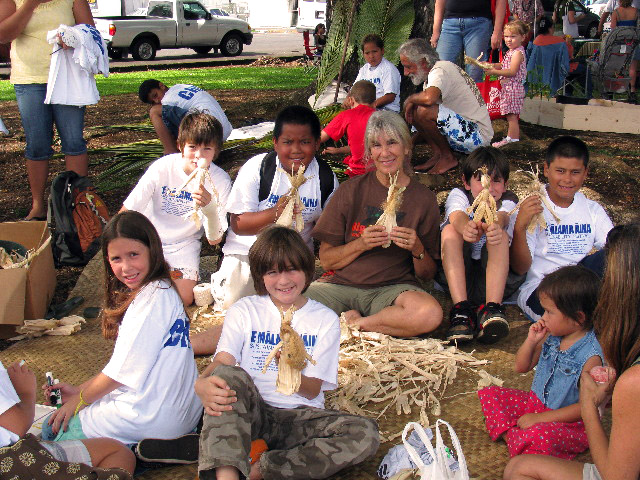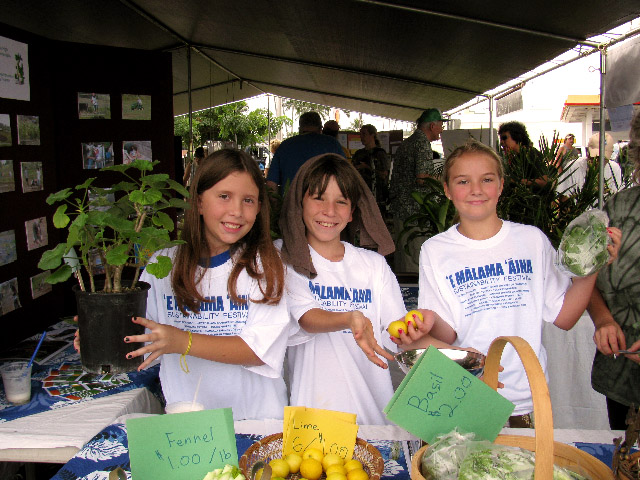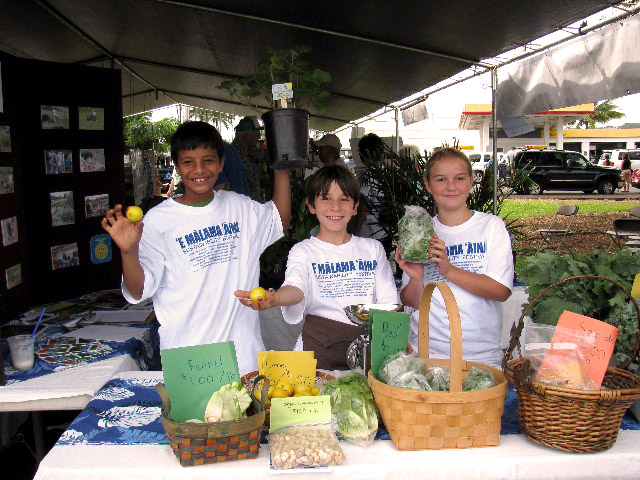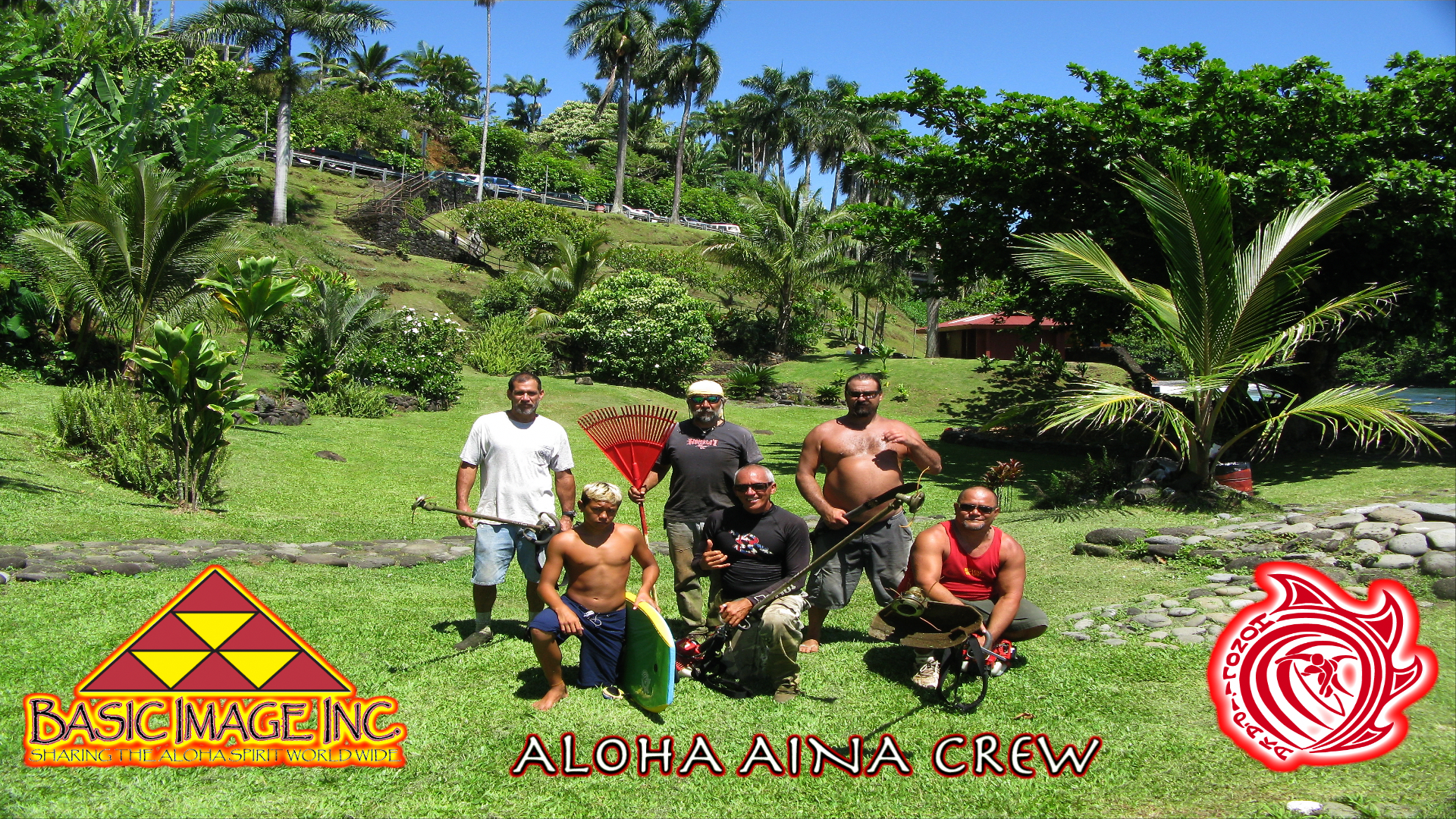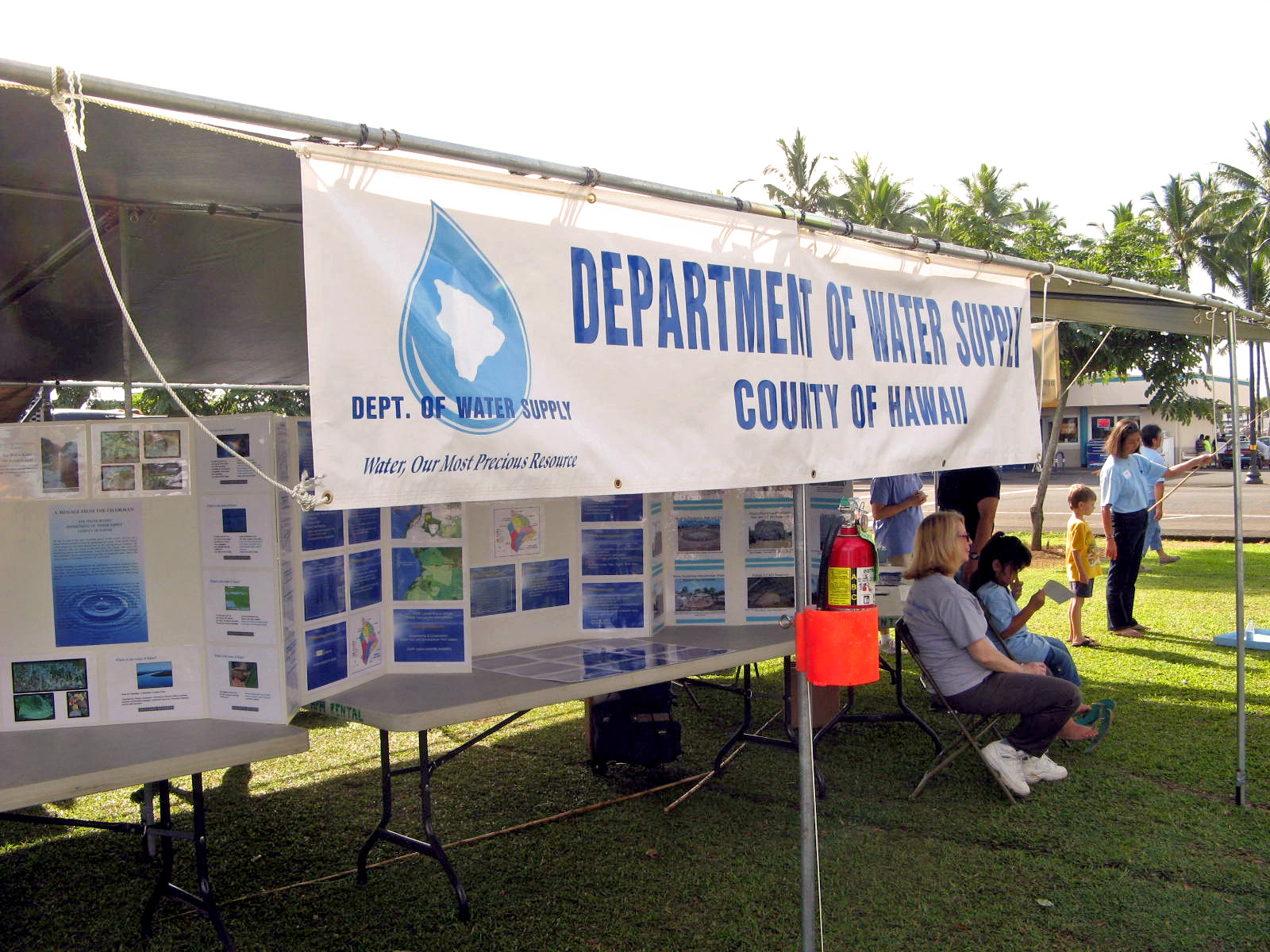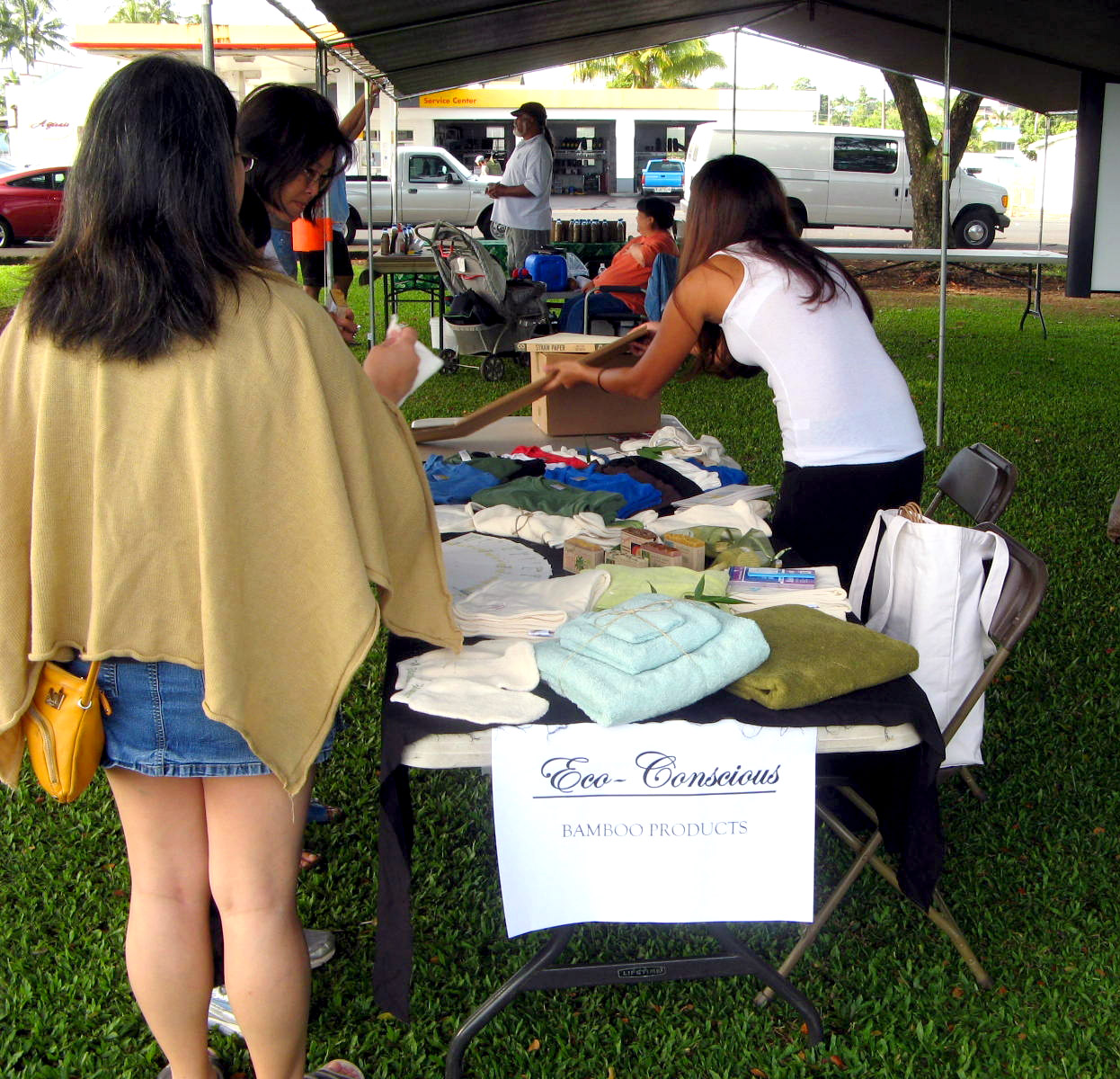But first, a program note!
Richard will be featured this Saturday, February 7, 2009, at noon on the PBS show Gourmet’s Diary of a Foodie. It’s an episode called Hawaii’s Big Island: A Food Lover’s Paradise.
If you see it, we’d love to hear your comments.
PBS Hawai‘i is also replaying its Long Story Short episode featuring Richard on Sunday (2/8) at 4 p.m. (Richard says it’s too much for me to go on and on about all these television shows — he actually asked me not to — but I thought you might want to know.)
***
“Hawaii will face numerous challenges in the upcoming years. If our island home is to prosper economically, socially and culturally, we need to identify and support the emerging generation of leaders. By nurturing them, we will ensure the future of Hawaii.”
— Mufi Hannemann, Founder and Chairman, Pacific Century Fellows
The Pacific Century Fellows program, which we wrote about here when the group of up-and-comers visited Hamakua Springs recently, is a leadership program founded by Honolulu mayor Mufi Hannemann after the White House Fellows program he participated in during the 1980s.
From its website:
The objective of the Pacific Century Fellows Program is to develop leaders with a greater awareness and sensitivity to the people and institutions of Hawaii. Based on the White House Fellows Program, the Pacific Century Fellows Program will bring together annually up to 25 of Hawaii’s most promising individuals from all walks of life, fields and professions. They’ll gain a broader view of civic duty through direct contact with senior community, social and government leaders. The program encourages the development of long-term relationships between leaders young and old, united in their commitment to find creative solutions to the challenges facing the state.
Charlyn Dote is the Pacific Century Fellows program director. She says the yearlong program (which introduces fellows to state-wide topics such as criminal justice, the military, the economy, education, the environment, public safety and others) is significant because community leaders “take off their official hats and talk candidly with the Fellows,” she says. “They share honestly their challenges as a leader. I think most of the Fellows will ascend to very important decision-making positions, and I think they will hopefully make better decisions and have a better understanding.”
Char told us more about the recent Big Island trip the 2008 Fellows took; the same one during which they visited Hamakua Springs.
They started their trip at the ‘Imiloa Astronomy Center in Hilo, with speakers such as ‘Imiloa’s Associate Director Ka‘iu Kimura and Hawaiian navigation expert Kalepa Baybayan providing cultural background; Dr. Colin Aspin on the Thirty-Meter Telescope; and Gary Fujihara, the Institute for Astronomy’s science education public outreach person, providing background on the economic and educational roles astronomy plays, and on promoting the STEM program.
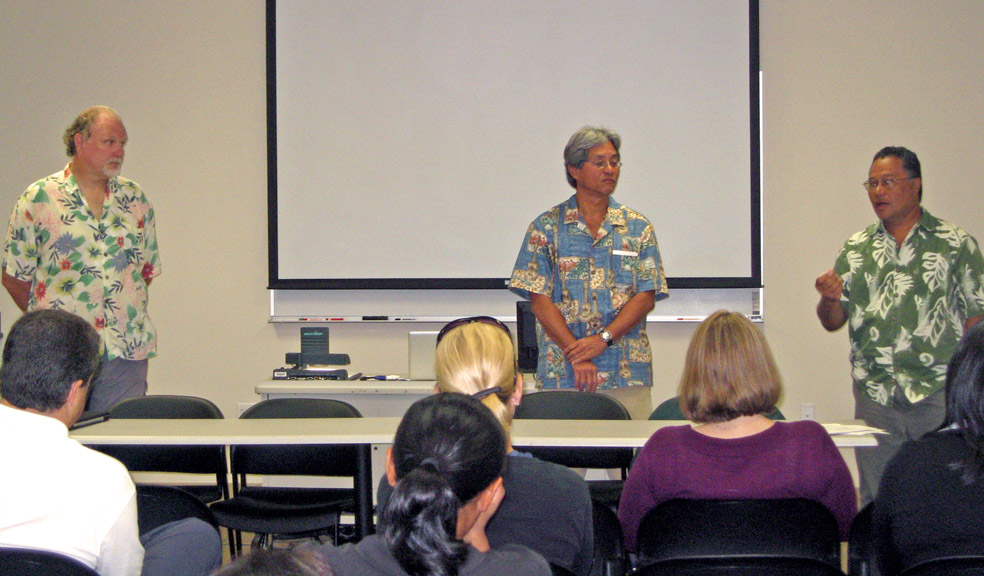 Left to right: Colin Aspin; Gary Fujihara; Kalepa Baybayan
Left to right: Colin Aspin; Gary Fujihara; Kalepa Baybayan
Then they headed up to Mauna Kea where they had lunch at Hale Pohaku, at 9000 feet, but couldn’t go up to the summit due to 116 mph winds there. Dr. Saeko Hayashi and Dr. Kumiko Yusuda talked to them about the Subaru telescope, and Ronald Laub spoke about the Keck Observatory.
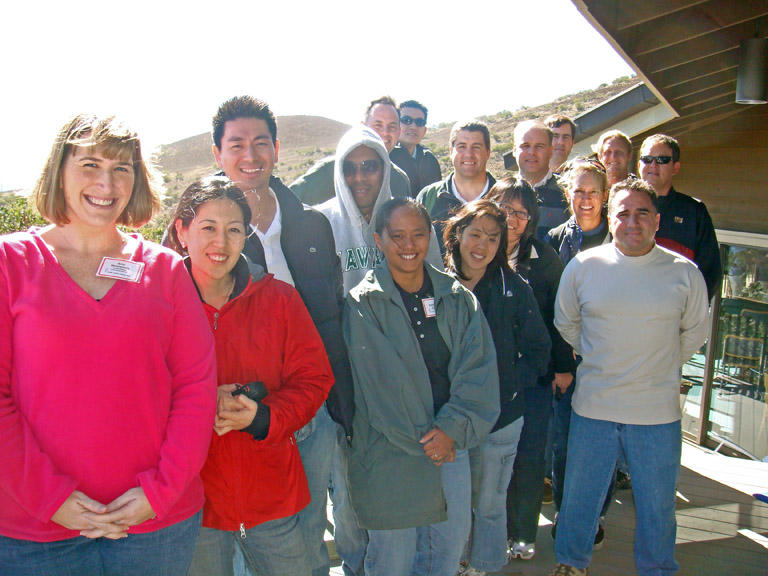 Left to right: Fellows at Hale Pohaku, which is located at the 9,000 ft. level of Mauna Kea
Left to right: Fellows at Hale Pohaku, which is located at the 9,000 ft. level of Mauna Kea
Dinner that evening, sponsored by the HPM Building Foundation, was at the Hilo Yacht Club. Some of the community members the Fellows met and spoke with there included Bill Takaba, Managing Director of the County of Hawai‘i; University of Hawai‘i at Hilo Chancellor Rose Tseng; Barry Taniguchi of KTA Superstores and his son Toby, himself a former Fellow; as well as former Fellow James Takamine, Assistant Vice President of American Savings Bank.
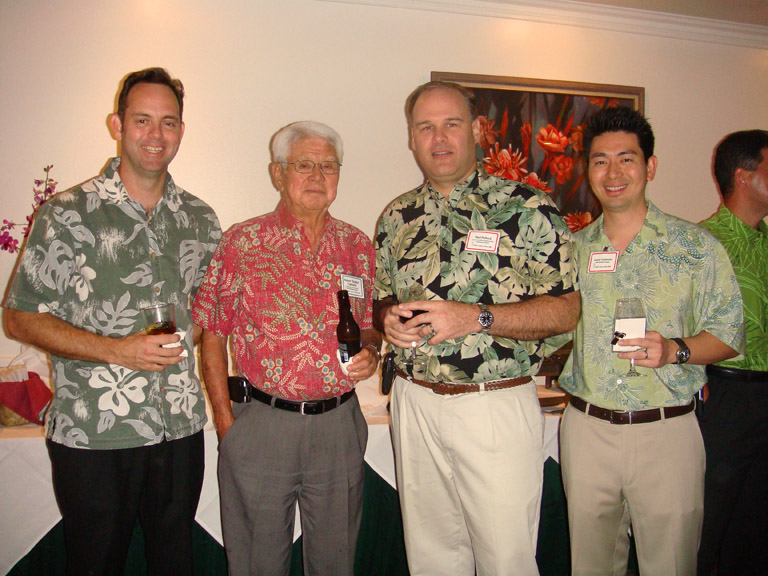 Left to right: Fellow Chris Leonard; HPM Building Supply Chairman of the Board Bobby Fujimoto; Fellow Paul Pollock and Fellow Jason Fujimoto at the Hilo Yacht Club
Left to right: Fellow Chris Leonard; HPM Building Supply Chairman of the Board Bobby Fujimoto; Fellow Paul Pollock and Fellow Jason Fujimoto at the Hilo Yacht Club
It was on their second morning here that they visited Hamakua Springs Country Farms. “Richard is such a visionary person,” says Char. “I wanted him to showcase what he’s doing on the farm, and also how he’s using technology and renewable energy to run the farm, and coming up with ideas outside of the box to sustain his agriculture business. He’s a very good example and role model of how a leader faces up to challenges and works with the community.”
Richard was equally enthusiastic about the Fellows. “I was very excited to interact with our future leaders,” he says. “They were all very bright and focused like a laser beam on the important issues. With leaders like them coming up, I’m optimistic for our future.”
 Richard, speaking to the Fellows at Hamakua Springs
Richard, speaking to the Fellows at Hamakua Springs
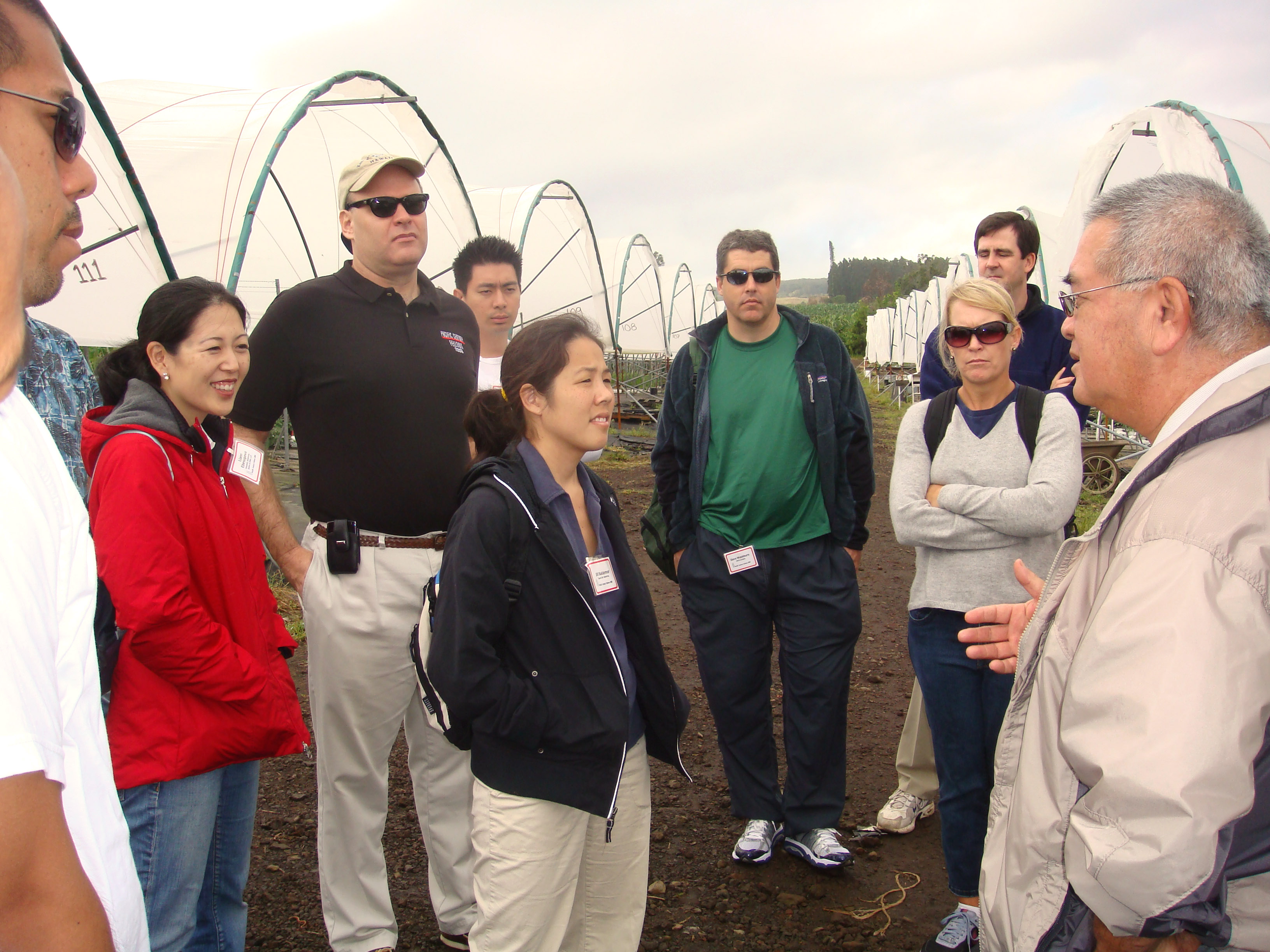
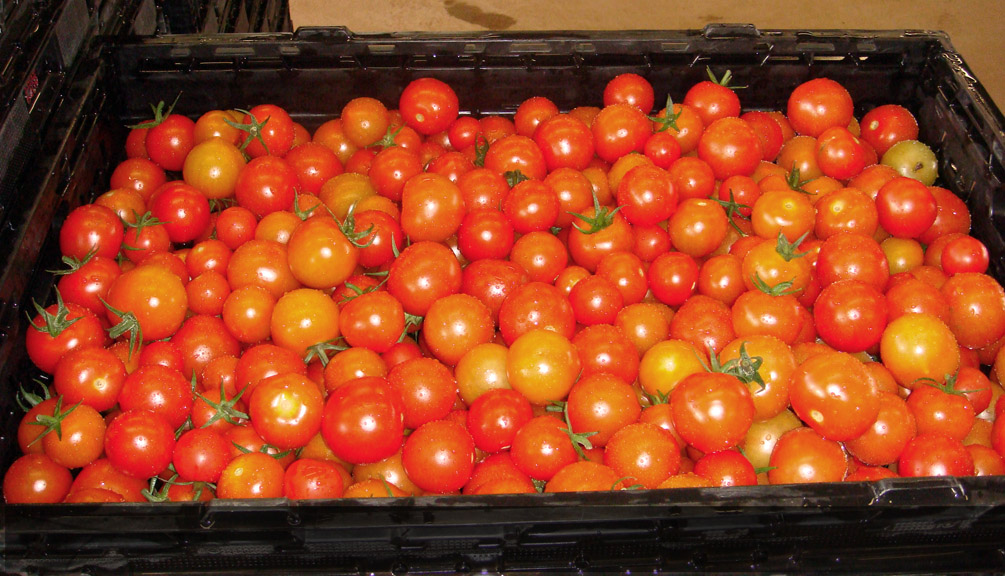
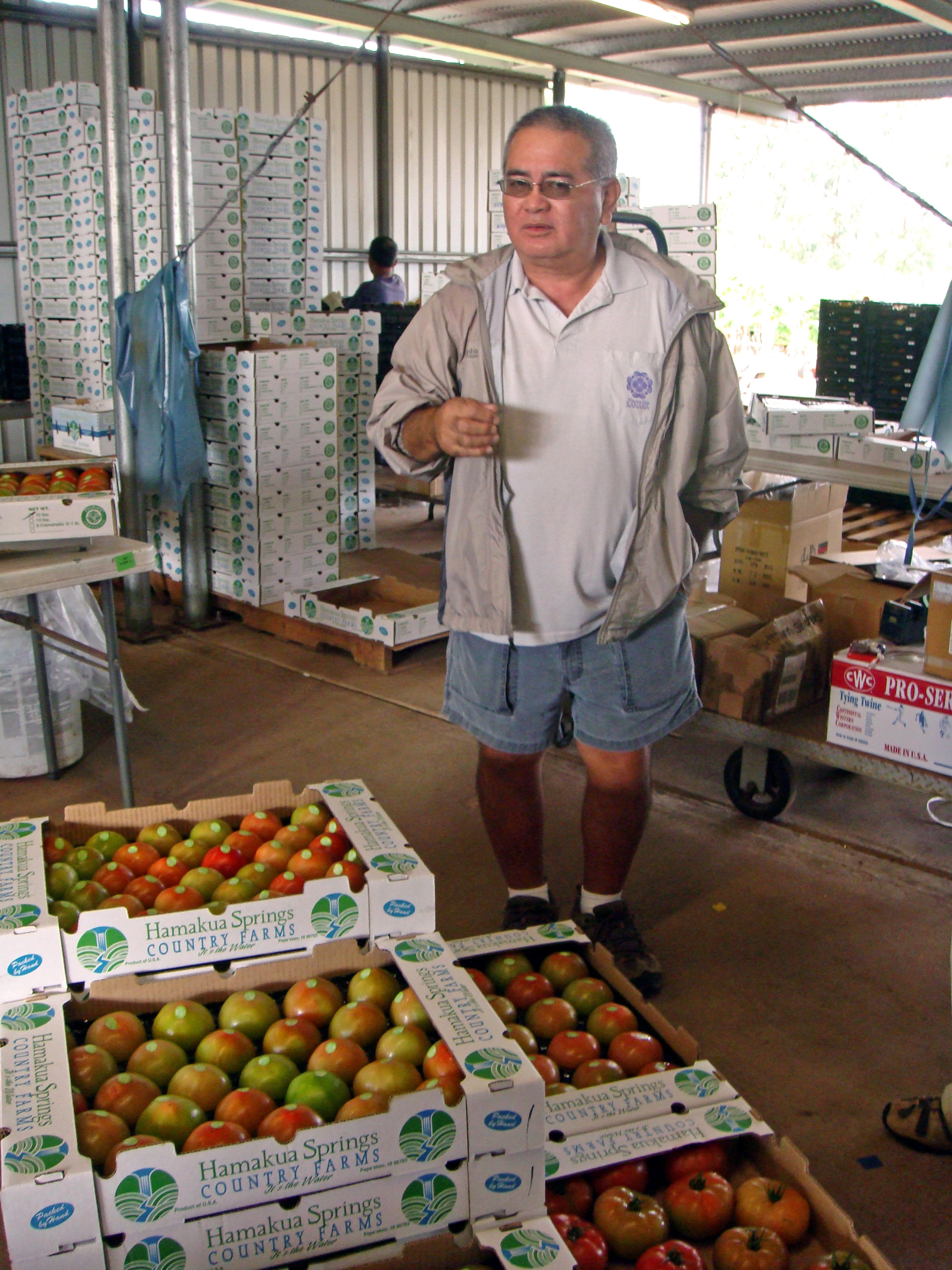
Jason Fujimoto, Vice President and Director of Corporate Operations at HPM Building Supply, says the Hamakua Springs visit was a highlight. “How large it is, the scale and size,” he says; “the different sustainable infrastructure that Richard is putting in to really make his farm sustainable into the future. People see his produce in the stores, but not the operation and not his involvement with the community.”
Char agrees that it was an important visit. “You read in the papers about how difficult farmers have it in terms of running their business,” she says, “but until you go there and hear it firsthand, you don’t realize how important it is to sustain and support our agriculture in the islands.”
While here they also had a private briefing by Ranger Ruth Levin, and the “inside scoop” by Geophysicist Paul Okubo, up at the Hawai‘i Volcanoes National Park. “They had time to walk around and understand how the vog is affecting the island climate, air, agriculture,” says Char.
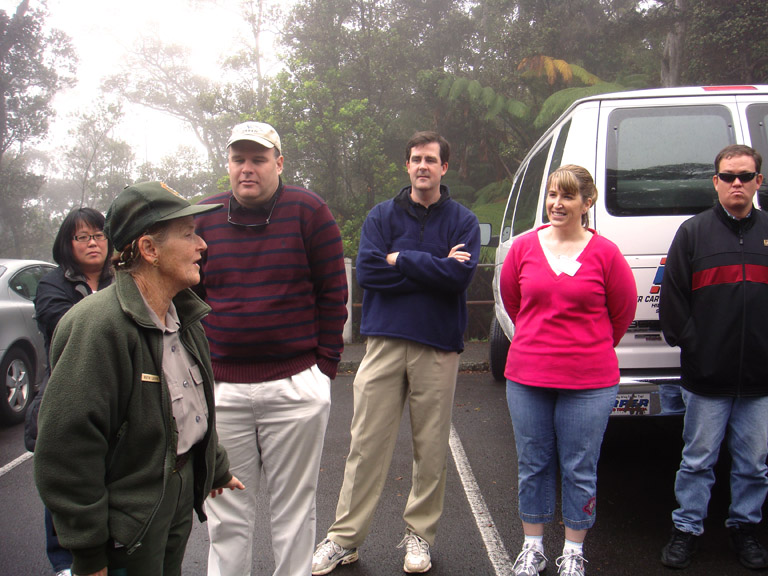 Front: Ranger Ruth Levin explaining the Hawai‘i Volcanoes National Park ecological history and challenges to the environment; left to right in back: Fellows Jan Harada, Paul Pollock, Tim Schools, Amy Hennessey, Jim Lyon
Front: Ranger Ruth Levin explaining the Hawai‘i Volcanoes National Park ecological history and challenges to the environment; left to right in back: Fellows Jan Harada, Paul Pollock, Tim Schools, Amy Hennessey, Jim Lyon
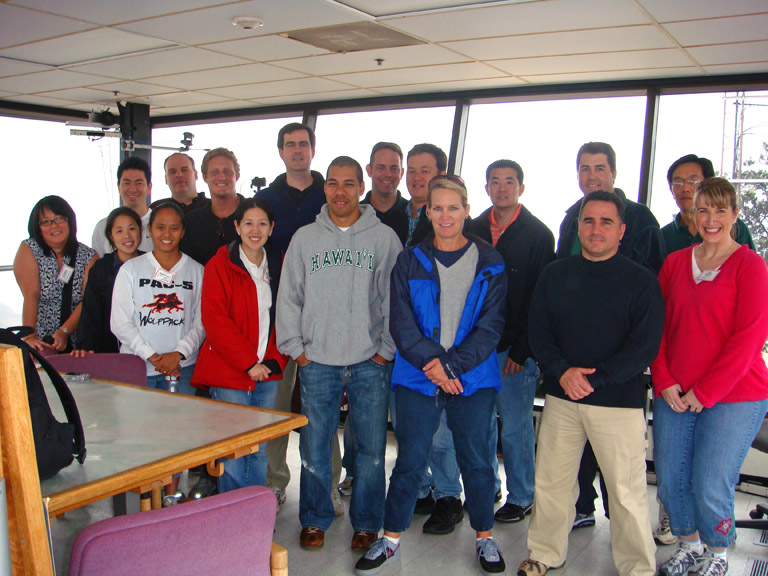 Fellows with Geophysicist Paul Okubo of the U.S. Geological Survey, in the observatory
Fellows with Geophysicist Paul Okubo of the U.S. Geological Survey, in the observatory
Some of the Fellows, she says, said being at Volcano was like being on a different planet. “It’s so quiet, and you can hear the birds and see the trees. It was a reminder to them to take time, slow down, and become more aware of their surroundings.”
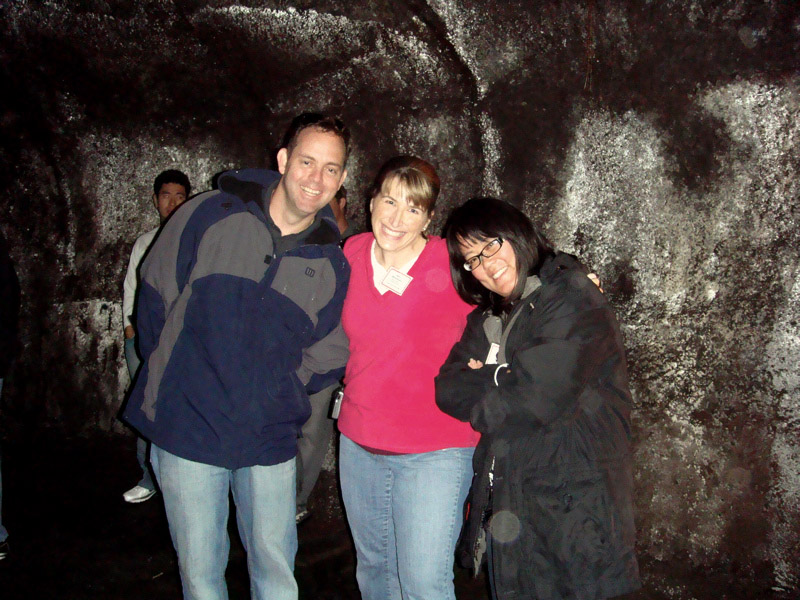 Left to right: Fellows Chris Leonard, Amy Hennessey and Jan Harada in the Thurston Lava Tube
Left to right: Fellows Chris Leonard, Amy Hennessey and Jan Harada in the Thurston Lava Tube
I asked Char what she thought the Fellows learned from this Big Island trip. She replied, “I think it was that the economy and the people are very diverse and interesting, and in many ways the community there is home-grown and rural. There are a lot of exciting things that are going on in terms of technology, environment, agriculture, and a lot of challenges.”
When I asked the same question of Big Island Fellow Chris Leonard, President and General Manager of New West Broadcasting Corporation, he told me what one of the other Fellows told him. “She said it’s one of the nice things in this program – that you get the opportunity to see that there are people like Richard, and Barry Taniguchi [of KTA Superstores], who have the passion and desire to make things better.
“Having the opportunity to interact with these people gives us some hope there is light at the end of the tunnel. That there are people aside from ourselves that really want to make things better.”

